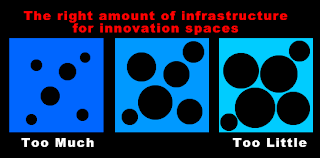- be good for our brains
- make degree programs much more affordable by providing higher quality educations at a lower cost
- redefine school work for students and redesign jobs for faculty members and administrators
- disrupt their current business models or established incentives for academic excellence
There are two other strategy drivers which support meeting all four of these challenges creatively and resourcefully. Thus the choice of strategy drivers becomes crucial to any model of reformation, renewal or replacement of the bastions of higher ed. Here's a brief look at those four strategy drivers:
- Quantitative strategy drivers dwell on the metrics as measures of success, bases for prioritizing and frameworks for addressing problems. These drive the spending on expansion, reallocating resources to accommodate larger enrollment and redirecting efforts away from solving isolated problems. These drivers put faith in objective, historical data which steer the enterprise by looking ahead through the rear view mirror.
- Qualitative strategy drivers fixate on dimensions of competitive superiority, extrinsic valuation and attributes that command premium prices. These drive the spending on prestigious acquisitions, reputation-building enhancements and investments to upstage rival institutions. These drivers put faith in subjective rankings, comparisons and accolades which steer the enterprise by looking at itself in the mirror to preen and posture itself more impressively.
- Intrinsic value strategy drivers dwell on how the customer is always right, beauty is located in the eye of the beholder and trust emerges from transparency. These drive the spending on listening to customers, discovering their unmet needs and bringing solutions to their contexts where the problems occur. These drivers put faith in feedback from customers' experience of the delivery system, desires for changes and insights into what's missing which steer the enterprise to become more responsive.
- Resilient strategy drivers dwell on the ways self-reinforcing cycles becomes self-sustaining and spinoff benefits for all the participants. These drive the spending on modeling the complexity, capturing the recursive dynamics and reversing vicious cycles into virtuous loops. These drive the spending in on initiating compassion, working with collaborators and responding to inherent requests which steer the enterprise to create ecologies where everyone wins without exploitation.
Both the intrinsic value and resilient strategy drivers function far more resourcefully and creatively than the other two. The bring out the best in the people involved which spills over into the lives of others impacted indirectly. The cumulative effects of these beneficial dynamics yields the wonderful effects on brains, affordability, job design and the reinvention of higher ed.









